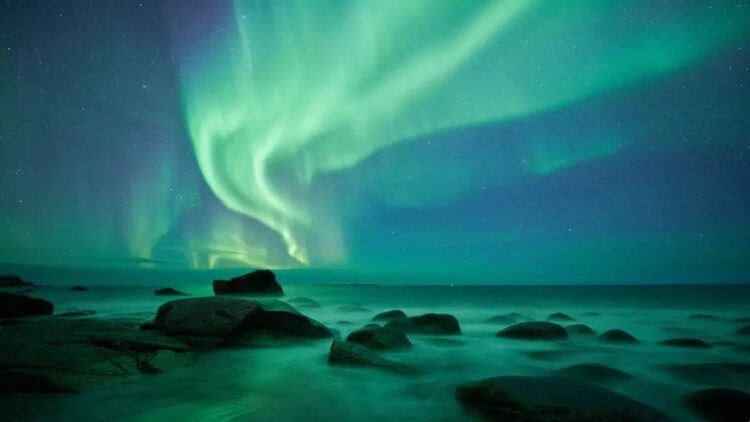The United Kingdom experienced something different on Thursday: sightings of the northern lights. We take a look at what caused this phenomenon, which was sighted in the far south, such as Kent and the UK. We also look at what the northern lights are and where to see them in the United States this coming Friday.
Historic northern lights in the US
As a starting point, let’s look at the northern lights. Some may call them aurora borealis, and they appear as bright, dynamic curtains of colour in the night sky of the northern hemisphere.
In the southern hemisphere, the same phenomenon is referred to as aurora australis or the southern lights. These stunning displays arise from solar activity.
The Guardian reports that in the midst of such rare events also known as coronal mass ejections (CMEs), the sun spews out plasma – a super-hot gas made up of charged particles.
“When these particles head towards Earth, they can interact with the planet’s magnetic field, resulting in a geomagnetic storm,” reports the publication.
“Some of these particles are funnelled towards Earth’s magnetic poles, passing energy to atoms and molecules in the atmosphere such as oxygen and nitrogen. These gases then emit energy in the form of light.
“The phenomenon typically occurs at high latitudes – think Canada, Scandinavia and near the south pole – but bigger CMEs mean the aurora can be seen further away from the poles.”
Where and when can you see the northern lights in America
Based on data from the Space Weather Prediction Center from the National Oceanic and Atmospheric Administration, reveals that northern lights are set to be visible on Friday across large parts of North America, including Canada and the northern parts of the US states of Minnesota, North Dakota, Washington and Montana.
Meanwhile, the UK Met Office released a statement that “The chances of aurora remain initially, though gradually easing through 11 Oct, becoming increasingly confined to far northern geomagnetic latitudes by 13 Oct.”
In addition, the report suggests that cloudier skies tend to reduce the likelihood of a sighting in the United Kingdom on Friday night, but the best chance is in Scotland.
While scores of people have already reported spectacular views on Thursday, the light show may be visible again on Friday, at least for some.
In the southern hemisphere, the Met Office said possible sightings of the aurora in Tasmania and New Zealand would reduce on Friday, and again the spectacle will be increasingly confined to high latitudes by 13 October.
The best way to see the northern lights: experts speak
Royal Observatory Greenwich astronomer Jake Foster shares an insight that if the aurora is predicted to be visible over your local the best way to view them is to get away from any light pollution.
“To the naked eye, the aurora is unlikely to look very colourful, so taking photographs of the sky with a long exposure or night mode will be the best way to know if the aurora truly is happening above your head,” he said.
Foster noted that if you are taking a picture, don’t forget to keep your camera steady – a tripod can help – and turn off the flash.
He concluded by saying that the activity can noticeably increase and decrease over the course of just minutes, so a bit of patience may be rewarded.
However, you don’t have to worry if you miss this glorious opportunity because it is expected that the northern lights will be spotted in numerous places and further south than usual this year – this means there will be more chances in 2024.

